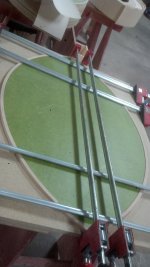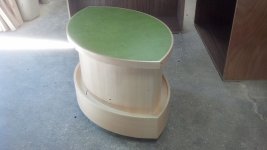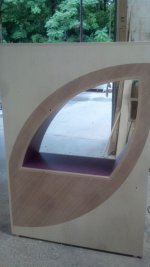Packard
Member
I’ve been interested in steam bending wood for a while now.
I see that both Wagner and Earlex, the spray painting equipment companies make steam generators for about $75.00.
Add some plastic pipe and hoses, about $125.00 to $150.00 to get started.
Anyone here have any experience with it? With these steam generators? I have watched some videos and the actual process seems pretty straightforward. A blending jig to make the shape you want, lots of clamps and the steam equipment.
It would seem that this works out best when you are making more than one piece of each shape. The real works goes into the bending jig.
https://www.google.com/search?q=steam+generator+for+steam+bending&client=firefox-b-1-m&ei=ksooY8faD96KptQPvKO_wAM&ved=0ahUKEwjH6_jn0qH6AhVehYkEHbzRDzgQ4dUDCA0&uact=5&oq=steam+generator+for+steam+bending&gs_lcp=Cgdnd3Mtd2l6EAMyBQgAEKIEMgcIABAeEKIEMgcIABAeEKIEOgoIABBHENYEELADOgYIABAeEAc6BQgAEIYDOgUIABCABDoFCAAQkQI6BAgAEA06CAgAEB4QCBAHOgYIABAeEAg6CAgAEB4QCBANOgQIIRAKSgQIQRgASgQIRhgAUMsLWNFcYKBvaAJwAXgAgAHRBIgB0jqSAQwyLjMzLjMuMS4yLjGYAQCgAQHIAQjAAQE&sclient=gws-wiz
I see that both Wagner and Earlex, the spray painting equipment companies make steam generators for about $75.00.
Add some plastic pipe and hoses, about $125.00 to $150.00 to get started.
Anyone here have any experience with it? With these steam generators? I have watched some videos and the actual process seems pretty straightforward. A blending jig to make the shape you want, lots of clamps and the steam equipment.
It would seem that this works out best when you are making more than one piece of each shape. The real works goes into the bending jig.
https://www.google.com/search?q=steam+generator+for+steam+bending&client=firefox-b-1-m&ei=ksooY8faD96KptQPvKO_wAM&ved=0ahUKEwjH6_jn0qH6AhVehYkEHbzRDzgQ4dUDCA0&uact=5&oq=steam+generator+for+steam+bending&gs_lcp=Cgdnd3Mtd2l6EAMyBQgAEKIEMgcIABAeEKIEMgcIABAeEKIEOgoIABBHENYEELADOgYIABAeEAc6BQgAEIYDOgUIABCABDoFCAAQkQI6BAgAEA06CAgAEB4QCBAHOgYIABAeEAg6CAgAEB4QCBANOgQIIRAKSgQIQRgASgQIRhgAUMsLWNFcYKBvaAJwAXgAgAHRBIgB0jqSAQwyLjMzLjMuMS4yLjGYAQCgAQHIAQjAAQE&sclient=gws-wiz








